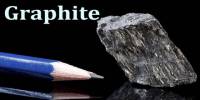A multinational team of researchers believes that a novel type of heterostructure of layered two-dimensional (2D) materials may be able to help quantum computing get over significant obstacles to its broad deployment.
A group from the Penn State Center supervised one of 19 Materials Research Science and Engineering Centers (MRSEC) in the United States supported by the National Science Foundation, the researchers for Nanoscale Science (CNS). Their work was published Feb. 13 in Nature Materials.
A regular computer consists of billions of transistors, known as bits, and are governed by binary code (“0” = off and “1” = on). A quantum bit, also known as a qubit, is based on quantum mechanics and can be both a “0” and a “1” at the same time. Superposition, which is what this is, can make quantum computers more potent than conventional, classical computers.
There is, however, an issue with building a quantum computer.
“IBM, Google, and others are trying to make and scale up quantum computers based upon superconducting qubits,” said Jun Zhu, Penn State professor of physics and corresponding author of the study. “How to minimize the negative effect of a classical environment, which causes error in the operation of a quantum computer, is a key problem in quantum computing.”
A solution for this problem may be found in an exotic version of a qubit known as a topological qubit.
“Qubits based on topological superconductors are expected to be protected by the topological aspect of the superconductivity and therefore more robust against the destructive effects of the environment,” Zhu said.
A topological qubit has to do with topology in mathematics, which is the study of structures that are being bent or stretched physically while maintaining their original features.
The fundamental notion behind this hypothetical sort of qubit which has not yet been realized is that the topological characteristics of some materials can shield the quantum state from being affected by the surrounding classical environment.
There is currently a lot of focus on topological quantum computing, according to Cequn Li, graduate student in physics and first author of the study.
This was remarkable teamwork by the IRG1 team of our MRSEC. The Robinson group grew the two atomic layer gallium film using confinement heteroepitaxy, the Chang group grew the topological insulator film using molecular beam epitaxy, and the Reifsnyder Hickey group and Materials Research Institute staff performed atomic scale characterization of the heterostructure and devices.
Professor Jun Zhu
“Quantum computing is a very hot topic and people are thinking about how to build a quantum computer with less error in the computation,” Li said. “A topological quantum computer is an appealing way to do that. But a key to topological quantum computing is developing the right materials for it.”
The authors of the study have made progress in this approach by creating a heterostructure, a kind of layered material. The heterostructure in the study consists of a layer of a topological insulator material, bismuth antimony telluride or (Bi,Sb)2Te3, and a superconducting material layer, gallium.
“We developed a special measurement technique to probe the proximity-induced superconductivity at the surface of the (Bi,Sb)2Te3 film,” Zhu said. “The proximity-induced superconductivity is a key mechanism to realize a topological superconductor. Our work showed that it indeed occurs at the surface of the (Bi,Sb)2Te3 film. This is a first step towards the realization of a topological superconductor.”
However, such a topological insulator/superconductor heterostructure is difficult to create.
“It’s not easy usually because different materials have different lattice structures,” Li said. “Also, if you put two materials together, they may react with one another chemically and you end up with a messy interface.”
Therefore, the researchers are using a synthesis technique known as confinement heteroepitaxy, which is being explored at MRSEC. Between the gallium layer and the (Bi, Sb)2Te3 layer, a layer of epitaxial graphene a sheet of carbon atoms that is one or two atoms thick must be inserted. Li notes this enables the layers to interface and combine, like snapping Lego blocks together.
“The graphene separates these two materials and acts as a chemical barrier,” Li said. “So, there’s no reaction between them, and we end up with a very nice interface.”
The scientists also proved that this method is scaleable at the wafer level, which makes it a desirable choice for future quantum computing. A wafer is a circular piece of semiconductor material used as a microelectronics substrate.
“Our heterostructure has all the elements for a topological superconductor but perhaps more importantly, it is a thin film and potentially scalable,” Li said. “So, a wafer scale thin film has a great potential for future applications, such as building a topological quantum computer.”
This research was a combined effort of the CNS’s IRG1 2D Polar Metals and Heterostructures team, led by Zhu and Joshua Robinson, professor of materials science and engineering at Penn State.
Other faculty involved in the research include Cui-Zu Chang, Henry W. Knerr Early Career Professor and associate professor of physics, and Danielle Reifsnyder Hickey, assistant professor of chemistry and materials science and engineering.
“This was remarkable teamwork by the IRG1 team of our MRSEC,” Zhu said. “The Robinson group grew the two atomic layer gallium film using confinement heteroepitaxy, the Chang group grew the topological insulator film using molecular beam epitaxy, and the Reifsnyder Hickey group and Materials Research Institute staff performed atomic scale characterization of the heterostructure and devices.”
The method must be improved in order to go closer to a topological quantum computer becoming a reality.
“The material is key so our collaborators are trying to improve the material,” Li said. “This means better uniformity and higher quality. And our group is trying to make more advanced devices on these kind of heterostructures to probe the signatures of topological superconductivity.”
Along with Li, Zhu, Reifsnyder Hickey, Robinson and Chang, other authors in the study from Penn State include Yi-Fan Zhao, Alexander Vera, Hemian Yi, Shalani Kumari, Zijie Yan, Chengye Dong, Timothy Bowen, Ke Wang, Haiying Wang and Jessica L. Thompson.
Authors from Weizmann Institute of Science in Rehovot, Israel, include Omri Lesser and Yuval Oreg. Authors from the National Institute for Materials Science in Tsukuba, Japan, include Kenji Watanabe and Takashi Taniguchi.
The National Science Foundation via the MRSEC program provided funding for the study.
















